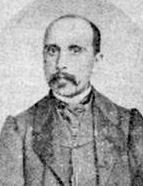

His work was received with much appreciation by the intellectuals of his time. Among the many congratulations he received, Alexandre Herculano and Manuel Pinheiro Chagas stand out. The latter praised his abilities as a researcher, saying that ‘ it was necessary [ … ] for men like Mr Teixeira de Aragão to multiply and for our archives to be searched by researchers of his calibre and judgement ’ ( Vasco da Gama e a Vidigueira … , 1898, XVII). Alexandre Herculano recognised the value and relevance of Teixeira de Aragão ’ s work, so much so that he said it would be ‘ a powerful aid ’ for his future research ( Descrição geral e história das Moedas… [General description and history of the coins] , 1877, volume II, p. IX).
For Teixeira de Aragão, History was not merely the study of kings and dynasties but the study of society as a whole from various perspectives. He believed in History as a science that reveals the past and its various realities, and he believed that it should utilise the results of other fields of study, cross-referencing information and thus taking advantage of History’s full potential. He considered coins to be material evidence that, when analysed on their own, convey a limited amount of information. Aware of this limitation, he used coins as a source of study, integrating them into their historical context with the aim of achieving a greater breadth of knowledge, both of the object and the context.
He participated regularly in the Portuguese intellectual milieu, taking part in various cultural societies and scientific committees, including the Academia Real das Ciências de Lisboa [Royal Academy of Sciences of Lisbon] , the Sociedade de Geografia de Lisboa [Academy of Geography of Lisbon] , the Real Associação dos Arquitectos e Arqueólogos Portugueses [Royal Association of Portuguese Architects and Archaeologists] , the Instituto Politécnico Português [Portuguese Polytechnic Institute] , the Instituto Vasco da Gama [Vasco da Gama Institute] , the Instituto Geográfico Argentino [Argentine Geographical Institute] , the Hungarian Academy of Paris, the Royal Numismatic Society of Belgium, the Real Academia de Historia de Madrid [Royal Academy of History of Madrid] , the Instituto Histórico e Geográfico do Brasil [Historical and Geographical Institute of Brazil], and the Instituto Histórico de S. Paulo [Historical Institute of S. Paulo] .
This work is financed by national funds through FCT - Foundation for Science and Technology, I.P, in the scope of the projects UIDB/04311/2020 and UIDP/04311/2020.
